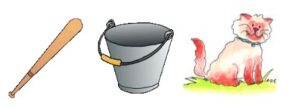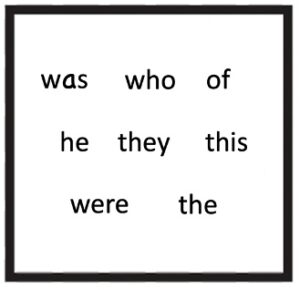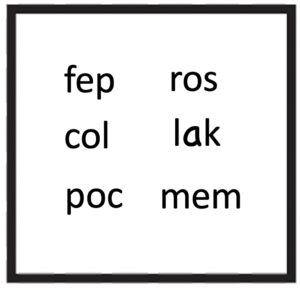WIAT-4 (WIAT-IV) Achievement Testing – Reading
What is the WIAT-4 (WIAT-IV) Reading Subtest?
The Reading Subtests on the WIAT-4 (WIAT-IV) are designed to measure a child’s proficiency in the following:
- Reading words
- It’s one of the subtests that integrate items from the WIAT-III Early Reading Skills into the new WIAT-4 (WIAT-IV) subtests.
- This set of questions includes Letter Naming and Word Reading Comprehension, which were included in WIAT-III and are now part of WIAT-4 (WIAT-IV) under a new name.
- It includes 4 subtests – Rhyming, Deletion, Substitution and Reversal. These items assess phonological awareness. Phonological awareness is the ability to notice, hear, and work with the discrete sounds that make up our spoken language.
- Decoding unfamiliar words
- This part of the subtest on the WIAT assesses the child’s strategy for decoding words (sounding them out based on letter sounds and common letter patterns).
- Reading comprehension
- This subtest measures the child’s comprehension from reading a passage and answering questions about the passage.
WIAT-4 (WIAT-IV) Reading subtests consist of word reading, reading comprehension, orthographic fluency, oral reading fluency, pseudoword decoding, and decoding fluency. Below are some of the sample questions.
Want to try us out? Sign up for a free account today and get 100 practice questions.
Word Reading
This section measures letter and letter sound knowledge. Students may be asked to match letters to sounds, rhyme words, delete part of a word, change part of a word to create a new word, and read aloud a list of regular and irregular words.
Sample Question #1: Look at these 3 pictures. Two of them end in the same sound. One of them does not. Can you point to the two pictures that end in the same sound or that rhyme?
Answer: 1st image (bat) and 3rd image (cat) have the same sound
Sample Question #2: Finish what I say with a word that ends alike or rhymes.
- He has a pan. He is a _________.
- Behind the block, I found a __________.
- In the trees, we see some __________.
- It’s a nice day, let’s go __________.
Answer: Answers may vary
Reading Comprehension
This section measures reading comprehension skills at three different levels: word, sentence, and passage. Students may be asked to match pictures with words, read a sentence and answer a question, and read a passage and answer questions about it (literal and inference).
Sample Question #1: Parents, before your child reads the passage, say: “We are going to look at how well you understand what you read. Read this piece. Then, I’m going to ask you a few questions about it.”
What is a Volcano?
We live on the outside of the earth. It is hot in the summer. It is cold in the winter.
But it is different inside the earth. It is very, very hot. It’s over 10,000 degrees! There are many rocks. The heat inside the earth melts the rocks. This hot melted rock is called “magma.”
A volcano happens when magma comes out of the earth through a mountain called a “volcano.” Magma can shoot out quickly, almost like an explosion. This is called an “eruption.” When the magma erupts, it is called “lava.” Lava is like melted rock that flows down the side of the volcano.
There are many famous on the earth. Mount Etna in Italy recently erupted in 2021. The active volcano in Kilauea, Hawaii is known for continuously erupting. Sometimes you can see them erupt. Volcanoes can be very dangerous if you get too close to it.
Question: Why do rocks inside the earth melt? (text evidence question)
Answer: Because it is very hot inside the earth.
Question: What does the word “eruption” mean?
Answer: It means that melted rock or magma comes shooting out of a volcano.
Question: How is the temperature outside of earth different from the inside of earth?
Answer: The outside of the earth can be hot or cold. The inside of the earth is always hot.
Orthographic Fluency
This section measures a student’s ability to recognize and read sight vocabulary words. It will give a list of words that aren’t necessarily spelled out the way they sound. This is a timed portion, as the words are to be quickly recognized by sight and not sounded out.
Sample Question #1: Say to your child:”Look at the words inside the box. Read each word out loud in the box to me when I say go. Ready, set, go!”
Answer: The child reads each word out loud.
Oral Reading Fluency
This section assesses your child’s oral reading fluency and comprehension abilities. She will need to read fluently and carefully, not skip over words, mispronounce words, take too long on a word, invert a word, or insert a different word while reading a passage.
Sample Question #1: Print the passage at your child’s grade level. Ask him to read it out loud. As your child reads, have a sheet of paper in front of you. Make a mark for any mistakes he makes. At the end of the passage, say, “Now, I’m going to read you two questions about what you just read.” Read the questions that come after the passage and see if your child can answer them.
The Titanic
Do you know about The Titanic? It was a famous ship. It left England in 1912. It was going to New York City. The ship was beautiful. It had nice things inside. It cost a lot of money. Then disaster struck. The Titanic hit an iceberg. The iceberg was big. It broke the ship. The Titanic sank. The water was very cold. Many people lost their lives.
Question: What is this passage about?
Answer: (The answer may vary.) It’s about a famous ship that hit an iceberg and sank causing many people to lose their life.
Question: Name the city the Titanic was sailing to?
Answer: New York
Pseudoword Decoding
This section measures phonic decoding skills. Your child will be read aloud a word or a made-up word. They will then be asked to write the letter the word begins with or be asked to spell the word using letter combinations that are typical of words spelled in English.
Sample Question #1: Say to your child, “I’m going to tell you a letter and then the sound that the letter makes. I want you to write the letter on the piece of paper. For example, I may say ‘B as in boy.’ You would then write the letter b on your paper.
- b as in bug
Answer: The child should write the letter “b”.
- d as in dog
Answer: The child writes the letter “d”.
- f as in fun
Answer: The child writes the letter “f”.
Sample Question #2: Say to your child, “I’m going to read you a word that is made up. Then, I want you to write the word on paper, spelling it the way it sounds to you and the way you think it would be spelled if it were real. Listen very carefully. I’ll say the word three times and then you can write it in lower case letters on your paper.”
- ug, ug, ug
Answer: ug, ugg, ugh – As long as the words are spelled phonetically the way you pronounced them, the word can be counted as correct.
- sup, sup, sup
Answer: sup, supp – As long as the words are spelled phonetically the way you pronounced them, the word can be counted as correct.
- zint, zint, zint
Answer: zint – As long as the words are spelled phonetically the way you pronounced them, the word can be counted as correct.
Decoding Fluency
This section assesses phonic decoding fluency. Your child will be given a list of nonsense words (pseudowords) that can be sounded out but do not have word meaning. He will decode these words that he is not familiar with and read them as quickly as possible. It is a timed test to measure how well he can read and sound out words based on the letter sounds and common letter patterns.
Sample Question #1: Say to your child: “Look at the words inside the box. They are silly (or nonsense) words without any meaning. Please read each word in the box to me when I say go. Ready, set, go!”
Answer: The child pronounces each word correctly.
Want to try us out? Sign up for a free account today and get 100 practice questions.
See if TestingMom.com supports your child’s test by your school district. If you don't see your child's school district listed, check with us! We have practice for other tests as well.



Tell us about your experiences